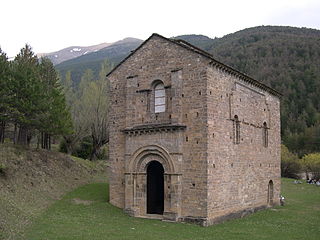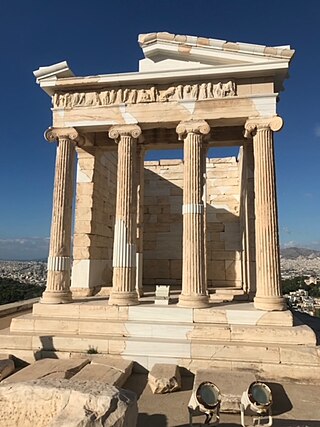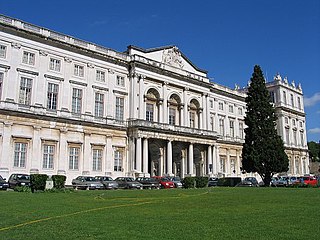
A World Heritage Site is a landmark or area with legal protection by an international convention administered by the United Nations Educational, Scientific and Cultural Organization (UNESCO). World Heritage Sites are designated by UNESCO for having cultural, historical, scientific or other forms of significance. The sites are judged to contain "cultural and natural heritage around the world considered to be of outstanding value to humanity".

The International Council on Monuments and Sites is a professional association that works for the conservation and protection of cultural heritage places around the world. Now headquartered in Charenton-le-Pont, France, ICOMOS was founded in 1965 in Warsaw as a result of the Venice Charter of 1964 and offers advice to UNESCO on World Heritage Sites.

Te Wāhipounamu is a World Heritage Site in the south west corner of the South Island of New Zealand.

Historic preservation (US), built heritage preservation or built heritage conservation (UK) is an endeavor that seeks to preserve, conserve and protect buildings, objects, landscapes or other artifacts of historical significance. It is a philosophical concept that became popular in the twentieth century, which maintains that cities as products of centuries' development should be obligated to protect their patrimonial legacy. The term refers specifically to the preservation of the built environment, and not to preservation of, for example, primeval forests or wilderness.

Conservation and restoration of immovable cultural property describes the process through which the material, historical, and design integrity of any immovable cultural property are prolonged through carefully planned interventions. The individual engaged in this pursuit is known as an architectural conservator-restorer. Decisions of when and how to engage in an intervention are critical to the ultimate conservation-restoration of cultural heritage. Ultimately, the decision is value based: a combination of artistic, contextual, and informational values is normally considered. In some cases, a decision to not intervene may be the most appropriate choice.

Cultural heritage is the heritage of tangible and intangible heritage assets of a group or society that is inherited from past generations. Not all heritages of past generations are "heritage"; rather, heritage is a product of selection by society.

Cultural heritage management (CHM) is the vocation and practice of managing cultural heritage. It is a branch of cultural resources management (CRM), although it also draws on the practices of cultural conservation, restoration, museology, archaeology, history and architecture. While the term cultural heritage is generally used in Europe, in the US the term cultural resources is in more general use specifically referring to cultural heritage resources.
The Convention on the Protection of the Underwater Cultural Heritage is a treaty that was adopted on 2 November 2001 by the General Conference of the United Nations Educational, Scientific and Cultural Organization (UNESCO). The convention is intended to protect "all traces of human existence having a cultural, historical or archaeological character" which have been under water for over 100 years. This extends to the protection of shipwrecks, sunken cities, prehistoric art work, treasures that may be looted, sacrificial and burial sites, and old ports that cover the oceans' floors. The preservation of underwater cultural heritage is significant as it allows for the retelling of numerous historical events. As part of its duty to conduct scientific research and provide continuous education on the importance of underwater cultural heritage, UNESCO strives to maintain these sites for the enjoyment of current and future generations. The convention may provide a customary framework to help raise awareness and seek to combat the illegal looting and pirating occurring in waters worldwide. As an international body, member states of the convention agree to work towards the preservation of sunken cultural property within their jurisdiction and the high seas.

A Cultural Property is administered by the Japanese government's Agency for Cultural Affairs, and includes tangible properties ; intangible properties ; folk properties both tangible and intangible; monuments historic, scenic and natural; cultural landscapes; and groups of traditional buildings. Buried properties and conservation techniques are also protected. Together these cultural properties are to be preserved and utilized as the heritage of the Japanese people.

A bien de interés cultural is a category of the heritage register in Spain. The term is also used in Colombia and other Spanish-speaking countries.

A national heritage site is a heritage site having a value that has been registered by a governmental agency as being of national importance to the cultural heritage or history of that country. Usually such sites are listed in a heritage register that is open to the public, and many are advertised by national visitor bureaus as tourist attractions.
The cultural monuments of the Czech Republic are protected properties designated by the Ministry of Culture of the Czech Republic. Cultural monuments that constitute the most important part of the Czech cultural heritage may be declared national cultural monuments by a regulation of the Government of the Czech Republic. Government may also proclaim a territory, whose character and environment is determined by a group of immovable cultural monuments or archaeological finds, as a whole, as a monument reservation. Ministry of Culture may proclaim a territory of a settlement with a smaller number of cultural monuments, historical environment or part of a landscape area that display significant cultural values as a monument zone.

The conservation and restoration of archaeological sites is the collaborative effort between archaeologists, conservators, and visitors to preserve an archaeological site, and if deemed appropriate, to restore it to its previous state. Considerations about aesthetic, historic, scientific, religious, symbolic, educational, economic, and ecological values all need to be assessed prior to deciding the methods of conservation or needs for restoration. The process of archaeology is essentially destructive, as excavation permanently changes the nature and context of the site and the associated information. Therefore, archaeologists and conservators have an ethical responsibility to care for and conserve the sites they put at risk.

The Direção-Geral do Património Cultural (DGPC), formerly the Instituto de Gestão do Património Arquitectónico e Arqueológico (IGESPAR) and Instituto Português do Património Arquitetónico (IPPAR, is a general directorate of the Government of Portugal tasked with the conservation, preservation, and inventory of Portuguese architectural heritage. This includes buildings and sites of historical, architectural, scientific or artistic value. The institute keeps a registry of all the classified sites and issues legally binding opinions regarding any works on them.

La Fortaleza and San Juan National Historic Site in Puerto Rico is a UNESCO World Heritage Site located in Puerto Rico, an unincorporated territory of the United States in the Caribbean. The world heritage site consists of several historic defensive structures built by the Spanish Empire between the 16th and 20th centuries to defend the strategically located colonial city of San Juan and its bay from foreign attacks. These fortifications are among the oldest European-built defensive systems and largest of its kind in the Western Hemisphere. In addition to its historic importance the site is notable for its architectural significance as one of the most prominent military adaptations of Renaissance and Baroque architecture in the Americas.
















